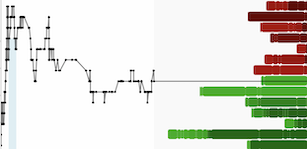SAN RAMON, Calif., Dec. 15, 2017 /PRNewswire/ -- The United States is home to a number of mountain ranges. Whether motorists are driving through to a ski resort, making a cross-country trip, or just going on their daily commute, mountain driving requires special attention and planning. Traversing steep grades, dealing with mercurial weather patterns, and obeying local laws and regulations are all parts of driving through the mountains. However, it can be hard to plan for every possibility, and things on the road might go wrong. To help members better deal with this unknown, Financial Education Benefits Center is rolling out a roadside assistance benefit that will allow eligible members to call for and receive help for a variety of car issues 24 hours a day.
"Whether you're going up to Tahoe or driving through the Rockies, mountain driving can be unnerving," said Jennifer Martinez, Manager at FEBC. "If something does go wrong, the roadside assistance benefit takes some of the guesswork out."
Steep Roads
When driving through the mountains, roads can climb thousands of feet above sea level. Going uphill can be taxing on the engine, and before departure, drivers should make sure the car's coolant is at acceptable levels. Cars with less powerful engines will have a harder time making it up steep grades, especially at the speed limit. Drivers with less powerful engines at their disposal should prepare to be in the right lane for a slower uphill climb. Drivers of cars of any kind should keep an eye on the temperature gauge or indicator light to make sure the car does not become overheated.
Going downhill poses its own set of challenges. While tempting to do so on steep declines, riding the brakes may damage them by making them too hot, which could render them less effective or inoperable. In order to safely descend on steep mountain roads, drivers may consider a lower gear to better accommodate the grade. It's also important to safely slow down at turns — it might mean the difference between staying on the road and spinning off the edge. Taking cues from fellow motorists might be wise; if everyone else is slowing down, a driver might want to slow down, too.
If a car is malfunctioning on a steep grade, finding the closest safe turnout location to stop is advisable. Eligible FEBC members who find themselves stranded can use the roadside assistance benefit by calling the specified number at any time. The roadside benefit can provide relief for a variety of issues related to traveling steep grades, including bringing necessary fluids to your car in order to cool it down or keep it running.
Changing Weather
Due to the change in elevation, weather may not be static throughout your mountain journey. Spring weather at the base of the mountain can change to snow flurries toward the top. Wind may be exacerbated on high elevation roads or through certain mountain passes. Drivers should check weather conditions before setting out, remember to drive with their headlights on in inclement weather, and slow down according to conditions.
Eligible FEBC members whose cars become inoperable due to unexpected weather will be able to use the upcoming benefit to call for help, including a tow truck.
Wintry weather in mountainous locations may also prompt implementation of certain state or local driving rules, which drivers are responsible for following, such as tire chain requirements. These rules improve safety in changing weather conditions.
Road Rules and Etiquette
Every state has its own rules, but states with high-elevation mountains like California and Colorado might require tire chains, also known as snow chains, or deep-tread tires when certain snowy or icy conditions arise on mountain roads, or during certain months of the year. Checking local tire chain laws and purchasing tire chains or deciding to drive a car with more traction is prudent before setting out on a mountain drive in snowy months.
Rules in various states might dictate how you drive up and down a mountain: reduced speed limits, required right lane usage, or pulling over to let faster cars pass by. Some practices may not be written in law, but may be good practices for the sake of defensive driving or just plain good road etiquette.
Help on the Way
"FEBC is proud to have this kind of protection benefit on the horizon," said Martinez. "It just provides a kind of comfort that you're covered for certain costs if something goes wrong on those high mountain roads."
For those who opt-in, this FEBC benefit will provide 24-hour roadside assistance throughout the United States for a variety of services, available by calling a number.
About Financial Education Benefits Center
Financial Education Benefits Center is located in San Ramon, California. The membership company has already helped thousands of people save money and obtain the necessary education required to live a financially healthy life.
Financial Education Benefits Center has partnered with several name brand third-party companies to expand the financial and educational products and services available to its members and to provide a variety of wellness services as well.
To learn more about Financial Education Benefits Center, please contact:
Financial Education Benefits Center
2010 Crow Canyon Place Ste. 100
San Ramon, CA 94583
1-800-953-1388
info@febcp.com
Related Links
![]() View original content with multimedia:http://www.prnewswire.com/news-releases/with-upcoming-roadside-assistance-benefit-febc-takes-the-edge-off-mountain-driving-300572216.html
View original content with multimedia:http://www.prnewswire.com/news-releases/with-upcoming-roadside-assistance-benefit-febc-takes-the-edge-off-mountain-driving-300572216.html
SOURCE Financial Education Benefits Center






